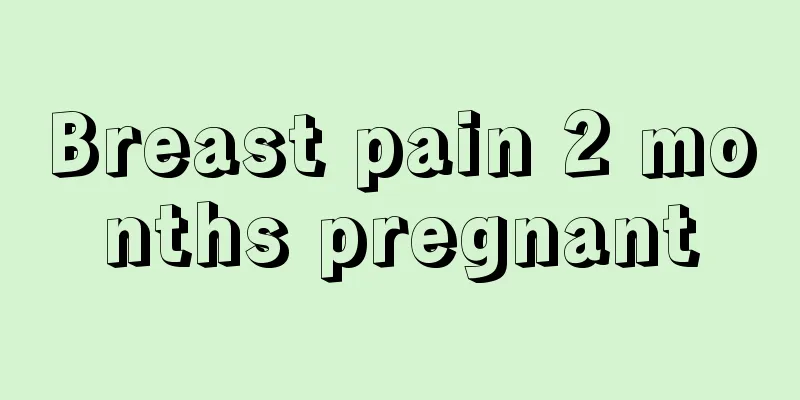What is fallopian tube cyst?

|
The problem of fallopian tube cyst is neither big nor small. It is also a common disease in clinical practice. This disease is closely related to inflammatory stimulation. Of course, the causes of fallopian tube cyst are also relatively complicated. When treating, it is also necessary to consider the cause and prescribe the right medicine for the disease. Fallopian tube cysts can also be said to be a type of adnexal cysts. The size of the cyst should also be considered when treating fallopian tube cysts. If the cyst is relatively small, surgical treatment is generally not required. Fallopian tube cysts have a great impact on human health and the symptoms are also very obvious. The choice of treatment plan also needs to take into account the symptoms so that the problem can be solved fundamentally. 1. Causes Fallopian tube cysts generally refer to the infection of the fallopian tube by pathogens, which leads to swelling of the endometrium, interstitial edema, exudation, and shedding of the fallopian tube mucosal epithelium due to the infiltration of white blood cells. If the acute inflammation of the fallopian tube is not treated promptly and effectively, fallopian tube abscesses will form. After the inflammation of fallopian tube pyosalpinx subsides, the pus is gradually absorbed and the fluid in the cavity changes from purulent to serous, becoming a fallopian tube cyst. Simple tubal pyosalpingitis may evolve into scar salpingitis or tubal cyst after the inflammation subsides. The latter is a common complication of chronic salpingitis, manifested by occlusion of the fimbria and cystic dilatation of the fallopian tube. The wall of the tube becomes thin and translucent, and the cyst is filled with clear serous fluid. The lumens of the dilated and undilated parts of the fallopian tube are still connected, so patients often have vaginal discharge. 2. Symptoms Symptoms of fallopian tube cysts: First is vaginal discharge. About 50% of patients have vaginal discharge, which is a yellow watery liquid, generally without odor, with varying amounts and often intermittent. This is the most specific symptom of this disease. Vaginal bleeding often occurs in the middle of the menstrual period or after menopause. It is irregular and small amount of bleeding, and curettage is often negative. Abdominal pain is usually dull pain in the lower abdomen on the affected side, which is caused by enlarged fallopian tubes. Sometimes it presents as paroxysmal colic, which is caused by spasmodic contraction of the fallopian tube. 3. Treatment The current treatment options for fallopian tube fimbria cysts are: 1. Open or laparoscopic fimbria ostomy 3-7 days after the menstrual period ends, with a success rate of about 20%; 2. In vitro fertilization, with a success rate also of about 20%. Salpingostomy is suitable for patients with unobstructed proximal fallopian tubes but hydrops and atresia at the distal end. |
<<: What is fallopian tube cyst?
>>: What is the best suppository for bacterial vaginitis?
Recommend
What does it mean when cats lick their fur frequently? What does it mean when cats lick each other?
Anyone who has ever raised a cat knows that cats ...
[Medical Q&A] How can you get "tennis elbow" if you don't play tennis?
Planner: Chinese Medical Association Reviewer: Ha...
Why do I feel back pain after egg retrieval?
What is the general reason for lower back pain af...
Ways for housewives to maintain physical and mental health
We know that housewives are under a lot of pressu...
When you get up in the morning, should you eat breakfast first or brush your teeth first? The answer is...
Original graphics and text, please contact the or...
Slight bleeding during pregnancy
Women may experience vaginal bleeding in early pr...
Menstruation is only ten days early
Menstruation comes every month, but for some wome...
Does cervical effusion affect pregnancy?
The so-called bilateral fallopian tube edema is t...
What are the benefits of eating cranberries? Where are cranberries mainly produced?
The latest research found that cranberry juice ca...
What are the approved malaria vaccines like? What are the difficulties in developing malaria vaccines?
Malaria is one of the most serious public health ...
How to distinguish between Agrocybe agrocybe and seafood mushroom? Common methods of cooking seafood mushroom
Seafood mushrooms are rich in nutrition, deliciou...
Pathological changes of endometrial polyps
Endometrial polyps are very harmful to women'...
Can I have sex with a low-lying placenta during pregnancy?
What will happen if a couple has a low-lying plac...
Why do I sometimes feel chest pain?
The chest is a relatively fragile part of the hum...









